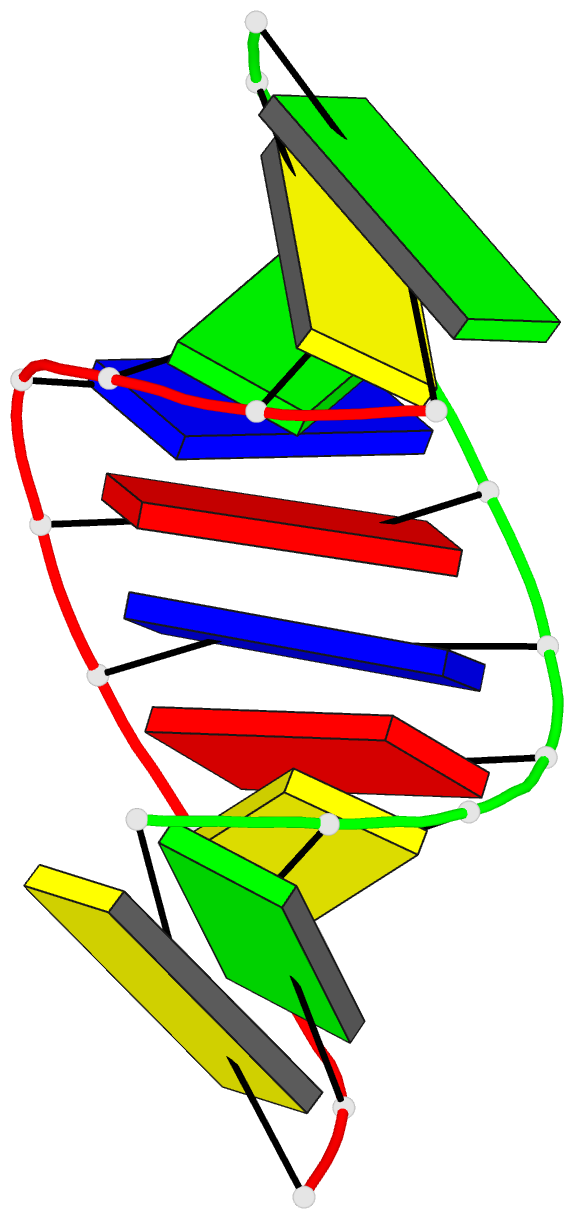Summary information and primary citation
- PDB-id
-
168d;
SNAP-derived features in text and
JSON formats
- Class
- DNA-RNA hybrid
- Method
- X-ray (2.0 Å)
- Summary
- Stabilizing effects of the RNA 2'-substituent: crystal
structure of an oligodeoxynucleotide duplex containing
2'-o-methylated adenosines
- Reference
-
Lubini P, Zurcher W, Egli M (1994): "Stabilizing
effects of the RNA 2'-substituent: crystal structure of
an oligodeoxynucleotide duplex containing 2'-O-methylated
adenosines." Chem.Biol., 1,
39-45. doi: 10.1016/1074-5521(94)90039-6.
- Abstract
- Background: The stability of hybrids of
2'-O-methyl-ribonucleotides with complementary RNA is
considerably higher than that of the corresponding DNA.RNA
duplexes. The 2'-O-modified ribonucleotides are thus an
attractive class of compounds for antisense applications.
Understanding how these substituents stabilize the
structure of the hybrid duplex may be important in the
design of ribonucleotides with novel properties.
Results: The crystal structure of a dimer of the
self-complementary DNA strand d(GCGT)O2'mer(A)d(TACGC),
which has a 2'-O-methylated ribonucleotide incorporated at
position 5, was determined at 2.1 A resolution. This strand
forms a duplex with an overall A-type conformation; the
methyl groups of the two modified adenosines point into the
relatively wide minor groove. Both 2'-methoxy groups are
hydrogen-bonded to solvent molecules. These results allowed
us to build a model of a fully 2'-O-methylated RNA double
helix.
Conclusions: Insertion of 2'-O-modified RNA residues into a
stretch of DNA can nucleate a local A-type conformation, in
part because modification with a bulky residue at this
position stabilizes a C3'-endo type sugar pucker. The
increased stability of fully 2'-O-methylated RNA may result
from hydrophobic interactions between substituents in the
minor groove. As the 2'-O-methyl groups are directed into
the minor groove, it may be worthwhile to introduce
tailor-made 2'-O-substituents into RNA; it might be
possible to design groups that both stabilize the hybrid
duplexes and carry a nuclease function, further improving
the efficacy of these modified RNAs in antisense
applications.





